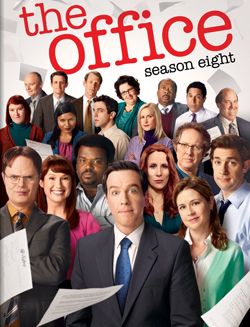Corporate
General Info

| Faction Name | Corporate |
|---|
Overview
Constantly maintaining a careful balance between humor and sincerity, Corporate strives to keep the company thriving by interacting with the dynamic and sometimes eccentric employees of the branch. Lead actors such as Jan Levinson and David Wallace not only inspire the comic script, but also pose serious dilemmas that affect the course of the story. Their solutions often create an intriguing contrast between the idiosyncrasies of the Scranton establishment and the bluntness of the business world.
The corporate faction provides a suitable contrast to the lively chaos of the Scranton branch and embodies the traditional image of professional hierarchy. Although often imbued with their own unique brand of antics, the Scranton branch staff are always aware of the company's role as an unseen authority, maintaining order, setting long-term goals, and implementing company-wide policies. This dynamic tension between the corporate faction and the Scranton branch is the foundation of the series, creating fascinating narrative currents throughout The Office's run.
History
A turning point in the rise of the corporate was the appointment of the head of the Scranton branch, the energetic and unconventional Michael Scott. His unique, often humorous but surprisingly effective leadership style ushered in a new era for the company. From negotiating major deals to resolving employee disputes, Scott's touch was visible in every corner of the office. Despite its idiosyncratic approach, the Scranton branch under Scott's supervision consistently outperformed other branches, eventually leading to the acquisition of the Buffalo branch.
However, the company's journey has not always been smooth sailing. Inefficiency at the highest levels of management, particularly CEO David Wallace, created significant challenges. Staff turnover was high and the atmosphere in the office was sometimes chaotic. There was a time when failure seemed inevitable. But the resilience of the workforce, along with the nimble maneuvering of key players like Jim Halpert, kept the company afloat and it worked.
Despite the company's many restructurings, scandals and power struggles, the corporate faction of The Office universe, Dunder Mifflin Paper Company, has remained strong and iconic. Its character-driven business practices, eccentric yet motivated workforce and deep commitment to its customers formed the foundation of its history. The company has been a symbol of traditional business practices and a testament to the tenacity, dedication and humor that ensure each institution survives, thrives and leaves a lasting impression.
Notable Members
Member #
1
Alan Brand
2
Charles Miner
3
David Wallace
4
Jo Bennett
5
Robert California
6
Jan Levinson
7
Gabe Lewis
8
Ryan Howard
9
Holly Flax
Geography
The main focus of the series is the office building itself that houses the Scranton branch of Dunder Mifflin. This central setting allows the audience to learn about the workers, their strange interactions and the comical drama of the paper salesman. But the series is not limited to this space. Other key locations include the downstairs warehouse, the core of Dunder Mifflin's operations; local pubs where office workers relax after work, especially Poor Richard's Pub; and the local Chili's, where the infamous Dundie Awards were once held.
In addition to Scranton, Stamford is also prominent in the series, especially in Season 3 when Jim Halpert moves to Dunder Mifflin's Stamford division. The series also occasionally took us to New York, where Dunder Mifflin is headquartered. These geographical changes helped create an overarching storyline, introduce new characters and showcase different office cultures, keeping the plot engaging throughout the series. Despite these diversions, Scranton, Pennsylvania has always remained the focus of the show.
